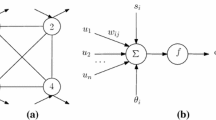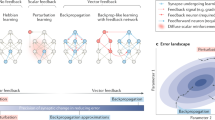Abstract
In training feed-forward neural networks using the backpropagation algorithm, a sensitivity to the values of the parameters of the algorithm hasbeen observed. In particular, it has been observed that this sensitivity with respect to the values of the parameters, such as thelearning rate, plays an important role in the final outcome. In thistutorial paper, we will look at neural networks from a dynamical systemspoint of view andexamine its properties. To this purpose, we collect results regarding chaostheory as well as the backpropagation algorithmand establish a relationship between them. We study in detail as an example the learning of the exclusive OR,an elementary Boolean function. The following conclusions hold for our XOR neural network: no chaos appears for learning rates lower than 5, when chaosoccurs, it disappears as learning progresses. For non-chaotic learning rates, the network learns faster than for other learning rates for which chaos occurs.
Similar content being viewed by others
References
Aihara, Takabe & Toyoda (1990). Chaotic Neural Networks. Physics Letters A 144(6, 7): 333–340.
Aleksander & Morton (1991). An Introduction to Neural Computing. Chapman & Hall: London, 240 p.
Bergé, Pomeau & Vidal (1992). L'ordre dans le chaos. Hermann: Paris, 352 p.
Broer, Dumortier, van Strien & Takens (1991). Structures in Dynamics. North-Holland: Amsterdam, 309 p.
Broer & Takens (1992). Wegen naar Chaos en Vreemde Aantrekking. In Broer & Verhulst (eds.) Dynamische systemen en chaos, 1–76. Epsilon Uitgaven: Utrecht.
Broer & Verhulst (1992). Dynamische systemen en chaos. Epsilon Uitgaven: Utrecht, 349 p.
Derrida & Meir (1988). Chaotic Behavior of a Layered Neural Network. Physical Review A (September) 38(6): 3116–3119.
Feigenbaum (1980). Universal Behavior in Nonlinear Systems, 4–27. Los Alamos Science.
Grassberger & Procaccia (1983). Estimation of the Kolmogorov Entropy from a Choatic Signal. Physical Review A 28: 2591–2593.
Lorenz (1989). Nonlinear Dynamical Economics and Chaotic Motion. Springer Verlag, 248 p.
Moon (1987). Chaotic Vibrations. Wiley & Sons: New York.
McClelland & Rumelhart (1988). Parallel Distributed Processing, Explorations in the microstructure of Cognition, vols. 1 and 2. MIT Press: Cambridge USA.
Sompolinsky & Crisanti (1988). Chaos in Random Neural Networks. Physical Review Letters 61(3): 259–262.
Takens (1981). Detecting Strange Attractors in Turbulence. In Rand & Young (eds.) Dynamical Systems and Turbulence. Springer: Berlin/Heidelberg/New York.
Van der Maas, Verschure & Molenaar (1990). A Note on Chaotic Behavior in Simple Neural Networks. Neural Networks 3: 119–122.
Weisss & Kulikowski (1991). Computer Systems that Learn. Morgan Kaufman Publ., San Mateo, 223 p.
Author information
Authors and Affiliations
Rights and permissions
About this article
Cite this article
Bertels, K., Neuberg, L., Vassiliadis, S. et al. On Chaos and Neural Networks: The Backpropagation Paradigm. Artificial Intelligence Review 15, 165–187 (2001). https://doi.org/10.1023/A:1011045100817
Issue Date:
DOI: https://doi.org/10.1023/A:1011045100817




